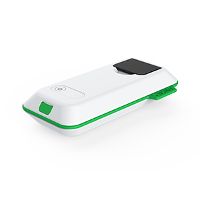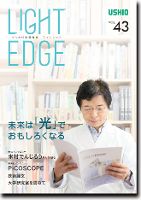光技術情報誌「ライトエッジ」No.43(2016年04月発行)
Flow Analysis 2015
(2015.06)
Platform of optical analysis device based
carbon-polydimethylsiloxane compound
for spectroscopic chamber integration
on information terminal
Kinichi Morita1, Hiroaki Nomada2, Hiroaki Yoshioka2 and Yuji Oki2
1 Ushio Inc.
2 Faculty of Information Science and Electrical Engineering, Kyushu University.
1. Background
● Optical system design based on robust and heavy substrate of frames for accurate mounts.
● Light pass is blank space, and adjustment mechanism need more space in traditional case.
● Lab on a chip is study for optical system with filled optical light guides. Recently, combination with smartphone are also studied.
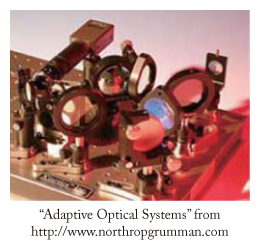
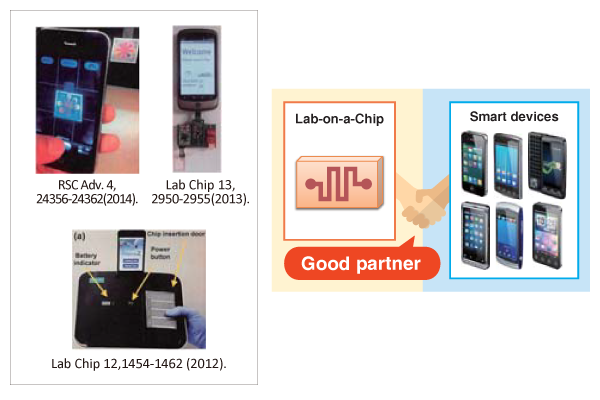
2. Previous work
● We propose novel optical system platform : Silicone Optical Technology (SOT)
● PDMS based optical channel and light blocking system for laser induced fluorescence (LIF) and photo absorption (PAS) type were prototyped.
● 7.2 × 102 cm-1 absorption coeff. confirmed with carbon doped PDMS
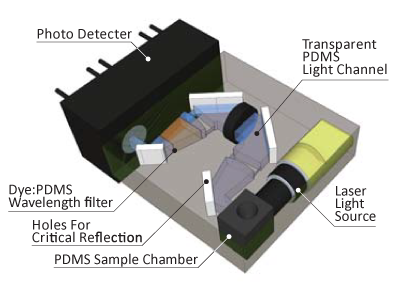
Schematic diagram of monolithic PDMS LIF module
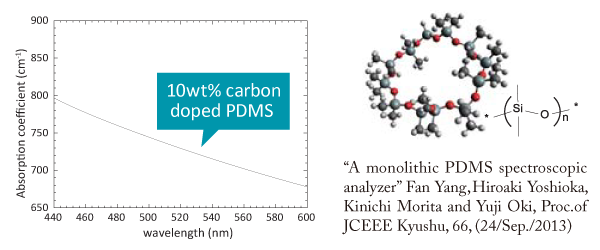
Absorption coefficient of 1wt% carbon mixed in PDMS
3. This work
● Propose new concept of “Lab on a Tablet” base on SOT, that exports active devices from the laboratory part to general tablet information terminals.
● Background and noise light trapping with carbonpolydimethylsiloxane (C:PDMS) was investigated.
● Two type of carbon ; carbon micron-sized particles (KECOLOR) and carbon nanotube were compared.
“Lab on a Tablet”, Hiroaki Nomada, Fan Yang, Hiroaki Yoshioka, Kinichi Morita, Yuji Oki Pittcon 2015, (10/Mar./2015) 1450-1
4. “Lab on a Tablet” for PCR-LAS
● Black C:PDMS sample holder for in-situ measurement.(No pipetting, Direct measurement pass-through sample tube.)
● Black C:PDMS attachment on LCD screen.
● 0-3 absorption can be measured with standard deviation~0.072%.
● With re-entry, reproducibility increased by 0.06%.
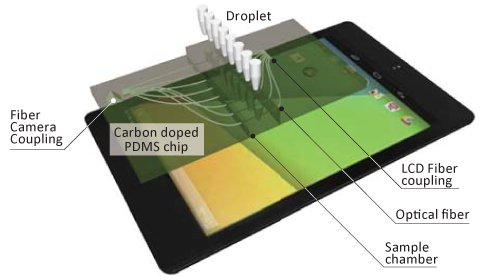
Nexus7 2013 model
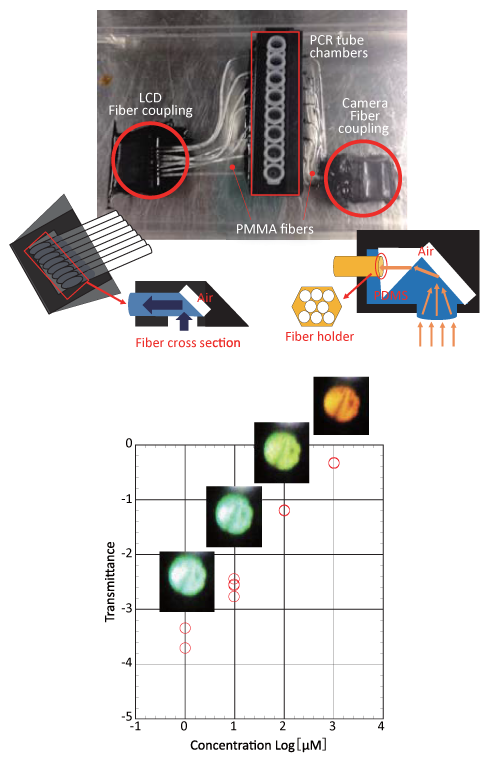
5. SOT for stray light suppression
● C:PDMS tube and PDMS-filled light channel covered with C:PDMS were investigated.
● Only light along channel can pass, bending can trap lights.
● Carbon Black particle (CB:PDMS) and CNT:PDMS were compared.
● OD5.2@90deg with CB, and OD4.5@30deg with CNT were observed.
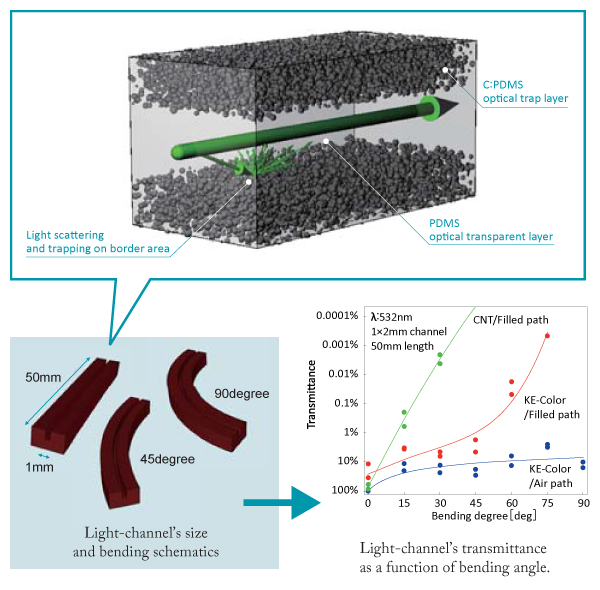
6. Light scattering properties
● Angular intensity distribution from border of PDMS&C:PDMS at 532nm with incidence angle of 45 deg.
● CNT shows 1/2~1/3 times lower scattering of CB.
● Mie type scattering pattern and multiple-Mie-scattering type.
● CB 10wt% and CNT 0.83wt% are best concentrations.
● CB and CNT forms similar sized particle even though different absorption property.
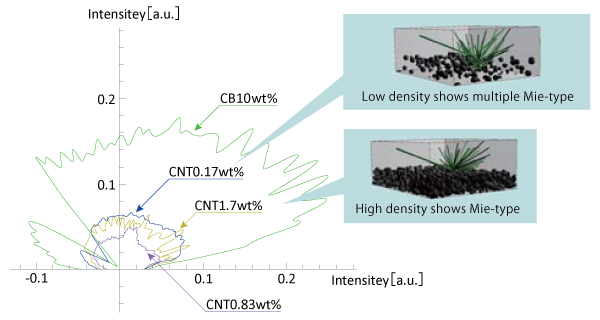
Scattering intensity angular distribution of CB:PDMS CNT:PDMS
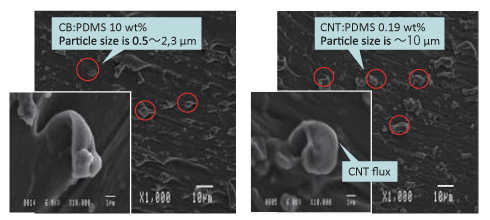
SEM image of knife-cut surface of CB:PDMS and CNT:PDMS
7. Summary
● LOT-PCR-PAS model is demonstrated on Nexus7
● SOT technology provides OD5~OD6 scattering reduction
● CNT:PDMS, CB:PDMS border scattering properties were investigated.
Flow Analysis XIII, Prague, Czech Republic
July 6th , 2015


